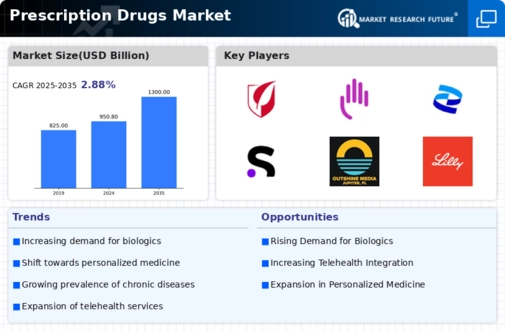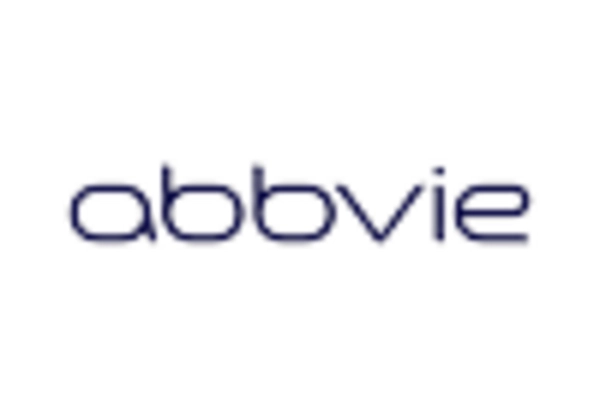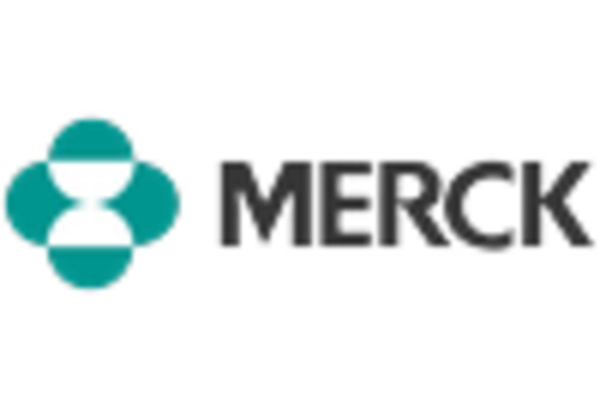The Global Prescription Drugs Market is characterized by its dynamic nature, driven by constant innovations, regulatory changes, and shifts in consumer demand. The competitive landscape in this market is heavily influenced by pharmaceutical companies striving to develop novel therapeutics and maintain market share amidst a rapidly evolving healthcare environment.
Companies are increasingly focusing on research and development to create biologics, biosimilars, and personalized medicines that cater to specific patient populations. The market is further shaped by strategic collaborations, mergers, and acquisitions that lead to expanded product portfolios and enhanced capabilities.
This competitive environment not only fuels advancements in drug development but also creates challenges, such as pricing pressures and the need for compliance with stringent regulatory frameworks, making it imperative for organizations to remain agile and responsive to market trends.
Gilead Sciences holds a significant position within the Global Prescription Drugs Market, recognized for its robust pipeline and strategic focus on antiviral therapies, particularly in areas related to HIV/AIDS and hepatitis. The company benefits from its strong research capabilities, which have positioned it at the forefront of developing highly effective medications that cater to both chronic and acute conditions.
Gilead Sciences has effectively leveraged its existing portfolio, achieving considerable revenue growth attributed to the increasing global demand for its innovative treatments. Furthermore, its ability to forge strong partnerships with other biopharmaceutical firms and engage in collaborations with healthcare stakeholders enhances its competitive advantage. This focus on strategic alliances allows Gilead Sciences to swiftly navigate market challenges and expand its reach within diverse therapeutic areas, showcasing its resilience and adaptability.
Amgen is another key player in the Global Prescription Drugs Market, renowned for its focus on biotechnology and a diverse product range that includes treatments for oncology, cardiovascular diseases, and inflammatory conditions. The company’s emphasis on innovation is reflected in its advanced biologics and monoclonal antibodies that offer targeted therapies, improving patient outcomes and enhancing treatment efficacy.
Amgen’s strong commitment to research and development enables it to maintain a competitive edge through the continuous introduction of new drugs and the optimization of existing therapies. The company also benefits from robust manufacturing capabilities and a well-established distribution network, allowing it to efficiently bring its products to market.
Amgen's strategic investments in clinical research foster long-term growth prospects and help solidify its reputation as a trusted leader in the prescription drugs landscape, catering to the evolving needs of patients and healthcare providers alike.


















Leave a Comment